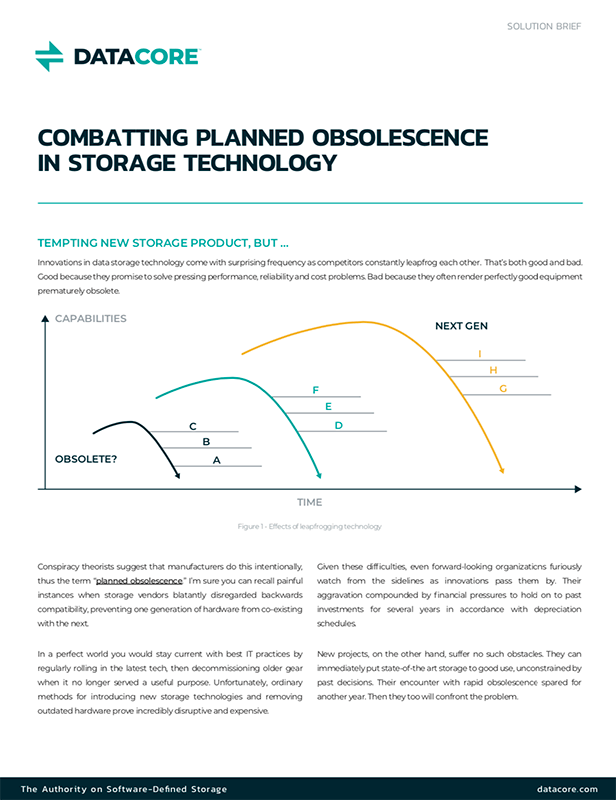The incredible rate of innovation renders last week’s new hardware prematurely obsolete in just a few months. Are sinister forces at work here? Do manufacturers intentionally tempt us with shiny new objects before we’ve even unwrapped our last purchase?
I’d like to think not. More likely, intense competition forces them to accelerate new product rollouts faster than we can assimilate them. I recall in slower times how major technology leaps were measured in years. Partly because suppliers placed much more importance on durability and backwards compatibility.
By no means am I advocating that we put the brakes on invention.
But today’s throw-away mentality blatantly disregards all sense of operational continuity. Like apps on your cell phone, the storage management commands and REST APIs you learned for version 1 seem radically different on v2. So too for the hard-learned configuration rules you earlier put in place. Worse yet, the changes come without warning. Perhaps vendors’ Continuous Integration / Continuous Development (CI/CD) programs need some guardrails that help ensure user interfaces and interoperability norms remain constant.
That’s on you as consumers to petition for with your wallets.
One of the cool things we do at DataCore is cushion users, apps and administrators from the many variables that each new generation of storage hardware surprises us with. Essentially, the storage virtualization software keeps familiar practices for provisioning capacity, protecting data and centralizing management intact despite the changing face of the underlying equipment. This lets you take advantage of next-gen technology when you deem appropriate, enhancing past investments, rather than clashing with them. It’s our small way of combatting planned obsolescence that could make a big difference in your environment.
For more in-depth tips helping you modernize while keeping your sanity, see the solution brief: Combatting Planned Obsolescence in Storage Technology
